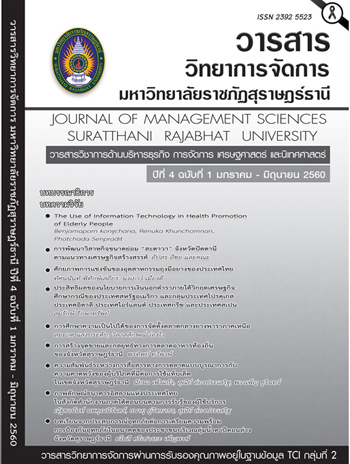Feasibility Study of Establishing Central Rubber Market in the North Thailand
Main Article Content
Abstract
The objectives of this feasibility study for establishment of a central rubber market in the North were to assess the environmental conditions of production and marketing including the potential of farmers’ groups to be a central rubber market. The empirical survey was from 5 provinces in 2014 and 2015. The total samples used in the study were 575 cases including farmers, farmers’ groups and relevant authorities involved in rubber plantations. The results showed that there were 466,384 rai of rubber tappable area which produce 111,163 tons of rubber operated by 321 farmers’ groups. There were 21-40 households per group. Trading by auction occurred 51 times per year for rubber sheets and 43 times per year for cup lumps. There were two potential centers collecting rubber in Phitsanulok and Chiang Rai provinces.Phitsanulok is a potential center for auctions in unsmoked sheet rubber because there is a smoked sheet factory while Chiang Rai is a potential center for cup lump because there are a crape factory and in land port. Total investment cost of investing in central rubber market as fixed cost is 1.54 million baht per year, variable cost is 8.74 million baht per year, whereas the benefit from operations is 10.48 million baht per year. The payback period is 5.58 years, the internal rate of return on project is 7.58%, benefit to cost ratio is 1.02 and the net present value is 191,832 baht. For administration of the market the method of trading rubber in these area is about 36.8% use of written auction price submitted to the market committee of. The sources of rubber came from inside and outside the province. The amount of rubber that gets into the auction market in Phitsanulok and Chiang Rai is 620 and 3,000 tons annually. The market has low potential because of facilities, the low of bargaining power of the farmers’ group with middleman, so the rubber prices are too low. In conclusion, the government should establish a pilot project by following the two models. Phitsanulok ’s model should be following the central rubber market in the south Thailand for sheet rubber.Chiang Rai’s model should set up forward auction on cuplump rubber auction. The pilot projects should have facilities including a warehouse and quality certificate unit.


